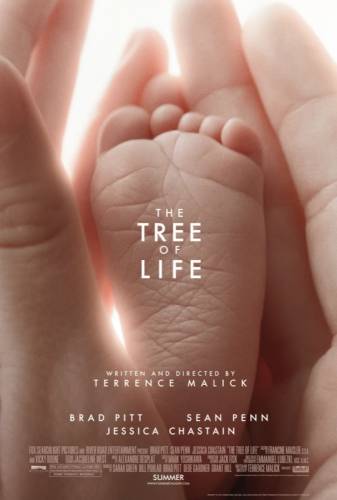
I don’t know if there’s any reason at this point to say anything about Terrence Malick’s cosmos-spanning opus The Tree of Life. It has taken home the big awards at Cannes and every critic on the face of the planet has weighed in one way or another. Leaving the theater after seeing The Tree of Life some weeks ago, the usual chirpy PR person thrust a clipboard in my face and demanded an opinion. Thirty seconds of thought doesn’t do a film like Tree of Life justice and I gently barked, "I’m glad there’s still a director out there making films like this." Someone behind me hurrahed, and I was on my way. It’s been two or so weeks now and my thoughts about The Tree of Life are similarly vague and I think Terrence Malick would enjoy that. The notoriously reclusive director has made a career of crafting both films and a persona that leave much to the imagination and The Tree of Life does not subvert these expectations. Malick’s newest film is a film only because it exists on celluloid. The Tree of Life is a tone poem, a brave, bold experiment in visuals and sound that deigns the concept of linear story unworthy.
The Tree of Life
could be said to be about, well, everything. Though a
loose story of a small family in Texas in the 1950s creates
the needed characters we as an audience need to connect with
the film, the majority of the film is scattered visuals of
the Earth, the cosmos, nature, flora, and fauna. Oh yeah,
Brad Pitt is in the film as a crew-cut sporting father with
an iron hand, and Jessica Chastain is his attractive, soft
wife and there’s kids and Sean Penn exists in the future
where he just sort of stumbles around looking sweaty, but
none of these are the point. Nor are the individual visuals
of the Sun spouting fire or a dinosaur racing across a
river. Malick has made a film that can’t be critiqued like
your casual cinematic experience, because he’s alluded the
casual cinematic requisites and replaced them with what
could be seen as an entirely cinematic experience. Terrence
Malick has crafted a living piece of memory - arguably his
memory - that interacts the way the actual mind processes
thought. It isn’t about picking through the grey matter to
find one single scene, it’s about the rush of visuals and
sounds and places and people that our entire brain revolves
about. Watching The Tree of Life is like experiencing a
virtual reality ride through the childhood of Terrence
Malick ... and the Earth.
|
